
STORY AND PHOTOGRAPHS BY FRIDERIKE HEUER
“One can resist [oppression] only in terms of the identity that is under attack.” – Hannah Arendt Men in Dark Times, 1968.
The title alone made me curious. Was Transparency a less than original descriptor of works made of glass? Was it an absolutely clever pointer redressing the invisibility of members of the LGBTQ+ community, who were the sole artistic contributors to the current exhibition of that name at the Museum of Glass (MOG) in Tacoma? Was it an invitation to shine the light on preoccupations and concerns of this particular community, only to reveal that these are often shared by us all, no matter what community we identify with? Was it a play on the fact that transparency is successfully used for purposes of camouflage in nature, as exquisitely demonstrated by jellyfish, South American glass frogs and clear wing butterflies?

The exhibit, first presented at the National Liberty Museum in Philadelphia during Pride month in 2017, will be on display in Tacoma until September 2020. It celebrates a wide range of subjects, methods, and styles equal to the variability within the artistic community that produced these works. I counted the fact that the title alone made me think, before I even physically entered the exhibit, as a success. As it turns out, one of many that this show delivers.
*
ONE OF THE FIRST PIECES YOU ENCOUNTER is a large disc heavily ornamented with white roses, reminiscent of a flowery Victorian doily. You see an eye, somewhat off-center, which, eerily, begins to move, to blink, quite clearly spying on you. Where We Hide from No One (2017), a glass, Poly Vitro and video sculpture by Tim Tate, is part of a series that he connects to issues of commercial surveillance, a balancing act between needs for privacy and protection from threat, and as a reminder “that we are united in Orwellian defiance.”

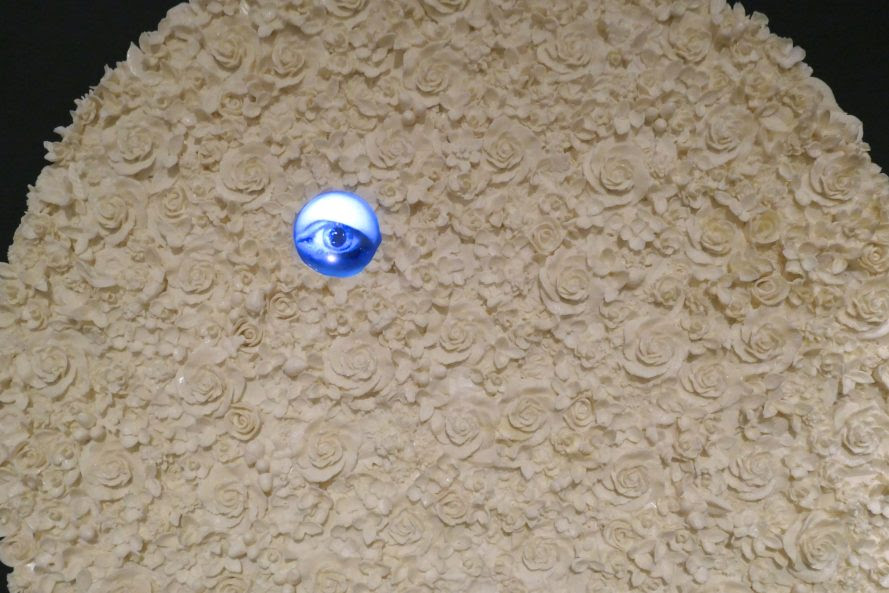
Alternative interpretations readily come to mind. Peering out from behind an opaque surface to see if it is safe to come out is reminiscent of what so many generations of the queer community had to do from hiding, just as the peeping Toms who did not dare to live their fantasies peered in reverse. The saccharine display of clouds of little roses obscures the harsh reality underneath, just like seemingly frivolous costuming hides the hardness of lives often exposed to condescension if not outright condemnation.
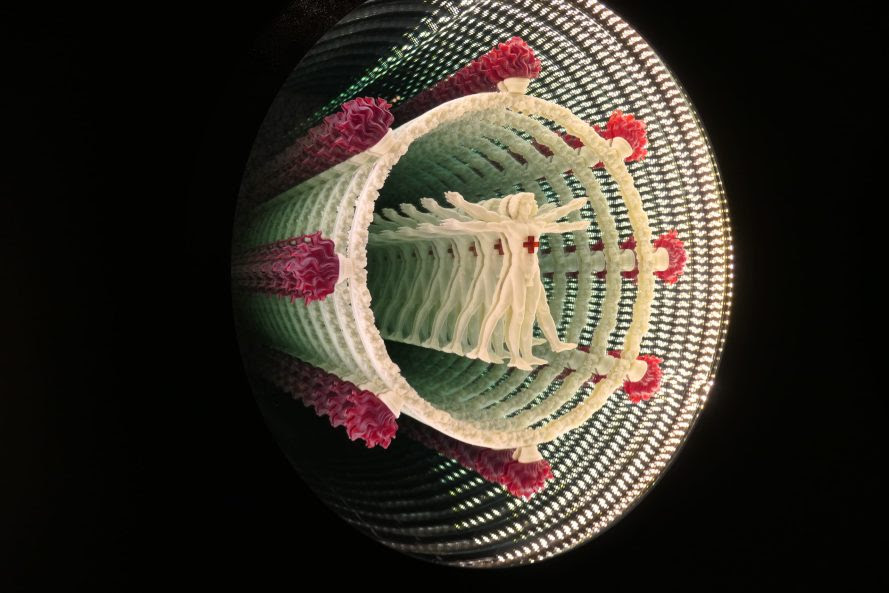
Tate, Mount Rainier’s Washington Glass School co-director, had his work The Endless Cycle from a different series represent the United States at this year’s Glasstress, the adjunct event to the Venice Biennale. It elicits an illusion of infinity, also found in the piece specifically created for Transparency: We Rose Up (2017). The optical manipulation, looking from afar like the crown of a martyr, draws the gaze in, at times mesmerizing. It is a memorial to the legions lost to AIDS/HIV infections. Whether with mirrors, or more cutting-edge videos, Tate’s incorporation of technology into a millennia-old medium creates striking effects, linking aesthetic form to social substance in innovative ways.
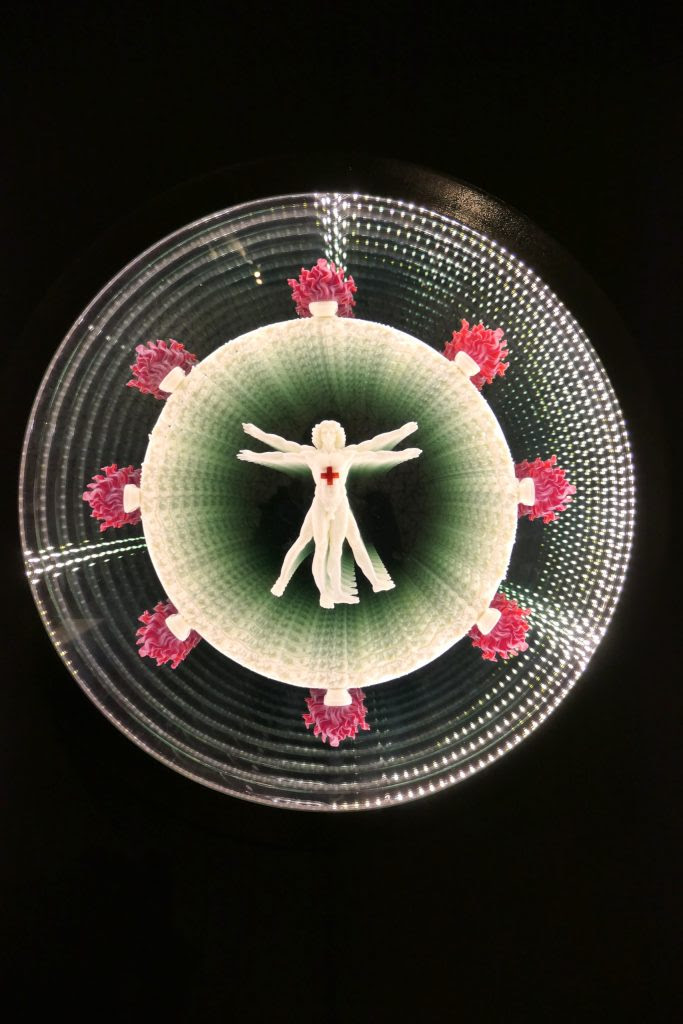
The tragedy of AIDS, with its loss of an entire generation of men in the 1980s and ’90s, appears in several works. Particularly moving is Jeff Zimmer‘s The Presence of Absence (2016), which depicts a skull overlaid with red crosses symbolizing AIDS and an etched phrase: “Your search – John Miles and Jeff Zimmer – did not return any documents.” Googling his formative first lover who died of the disease in 1995, the artist found no trace of him in the digital universe that contains multitudes of the rest of us.
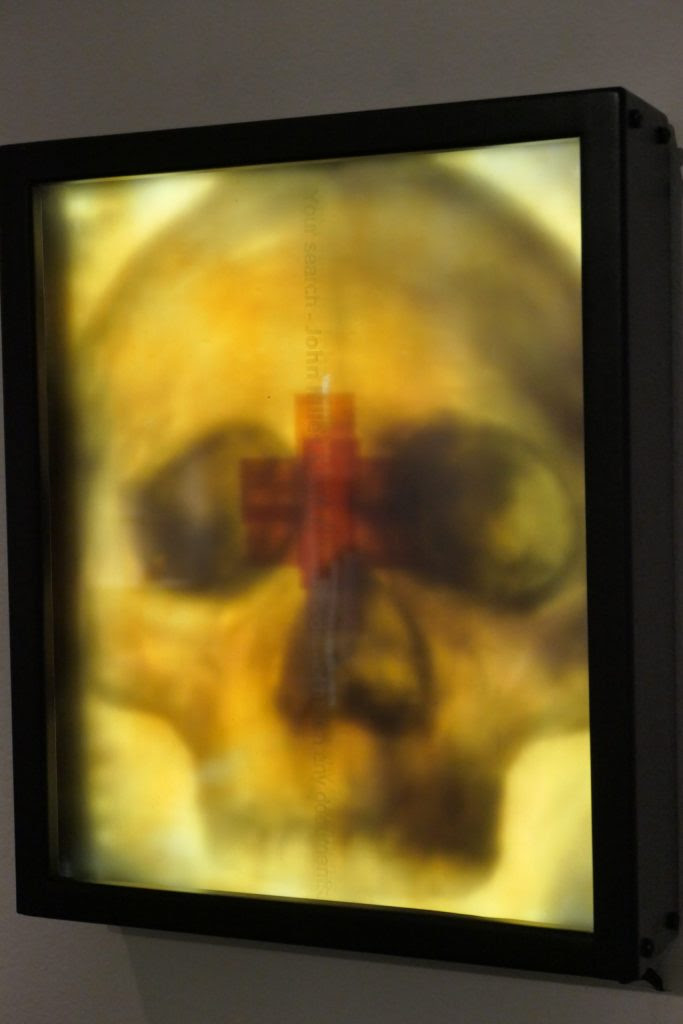
One of the strengths of this show is derived from the fact that it is not only about loss somewhat specific to the LGTBQ+ community, like AIDS. All of us can relate to the mourning of lost loved ones through any kind of illness, most beautifully represented by Eric Hess, who lost his husband to cancer. Swings (2017) depicts one intact, one broken swing, with its shadow resembling the shape of a chemotherapy infusion bag. The commonality of shared experience in some way magnifies the fact that there are additional burdens carried by this community that many of us who are not part of it are spared. I only wish that the existential threats to transgender people had also found their way into this display – the most recent statistics of their murders, 22 in 2019 alone, are staggering.
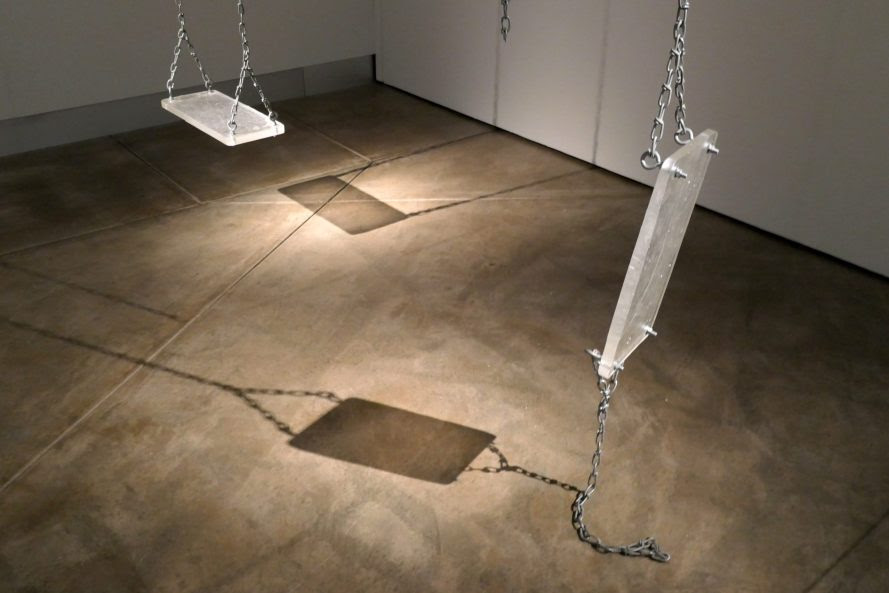
*
TALES OF LOSS AND LONGING RECUR in this quiet show, told at times with wit and sometimes wistfulness. Take Joshua Hershman‘s Derealization (2017), for example. A panel of photographs, partially obscured by opaque glass, in front of a pinhole camera made of glass (Obscura, 2017), is open to multiple takes. On the one hand, it stands in mocking contrast to the Transparency title of the exhibit. On the other hand, it describes the clinical disturbance that many people who have been exposed to trauma or suffer from PTSD experience. Fogginess of surroundings and a sense that things are not real pervade the sensory up-take of those who have been severely harmed.
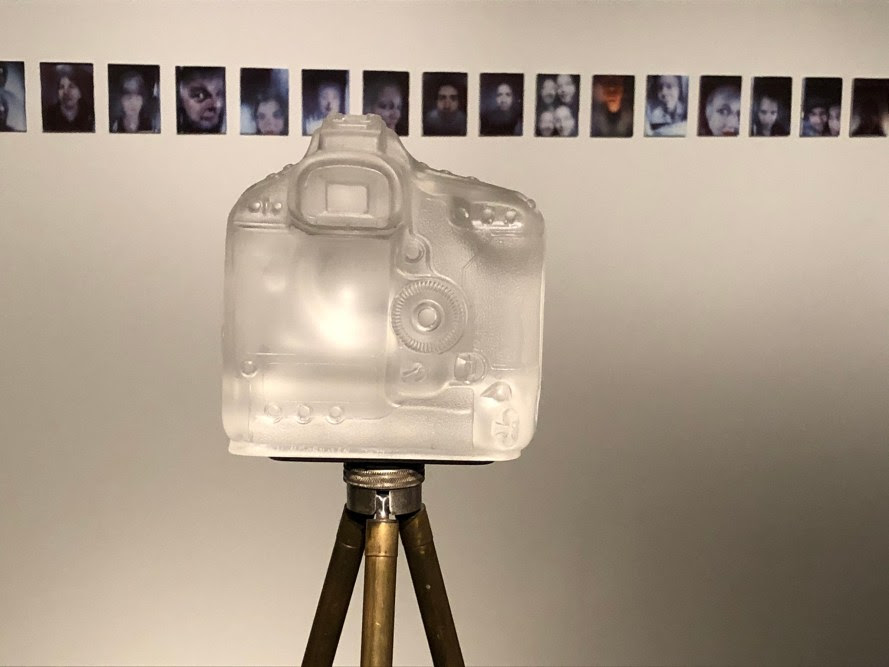
Somewhat explicitly sexual works are few and far between, cautiously stashed in corners. One wonders why, given that they exhibit the same dignity present in so many other strong pieces in this show. Whether they deal with ways to explore the malleability of the male gaze, as Amanda Nardone‘s Shatter (2017) does, or carefully tease the viewer’s obliviousness as to what the title could possibly imply, as does Walter Zimmermann‘s Pick of the Litter (2017), they make you think. My measure of success, as should be clear by now.
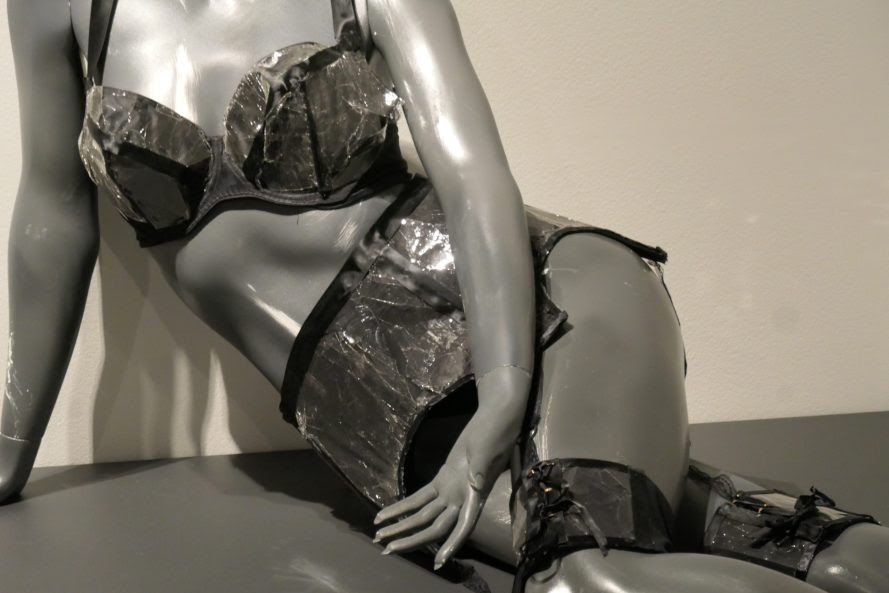
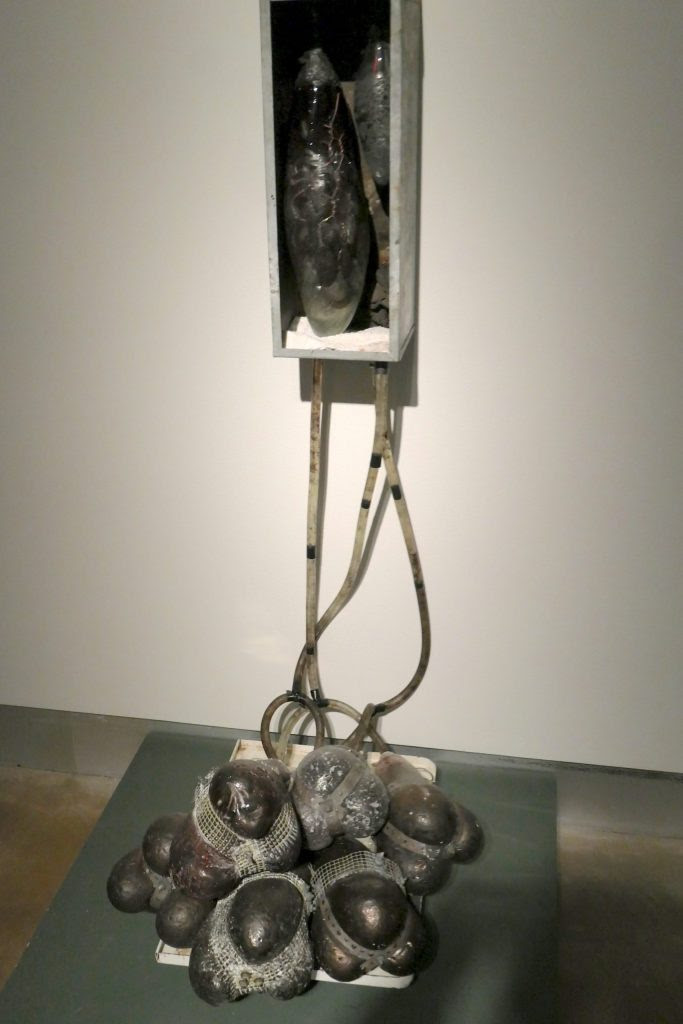
Works that focus on issues of gendered experience are also on display. What it means for women to break into the male-dominated glass-blowing world – I’ll spare you puns about glass ceilings – is beautifully captured in Kim Harty‘s To Signal to Summon (2016) which she describes as “ambiguous: A sparkling object trying to seduce or a reflective warning, signaling danger.”

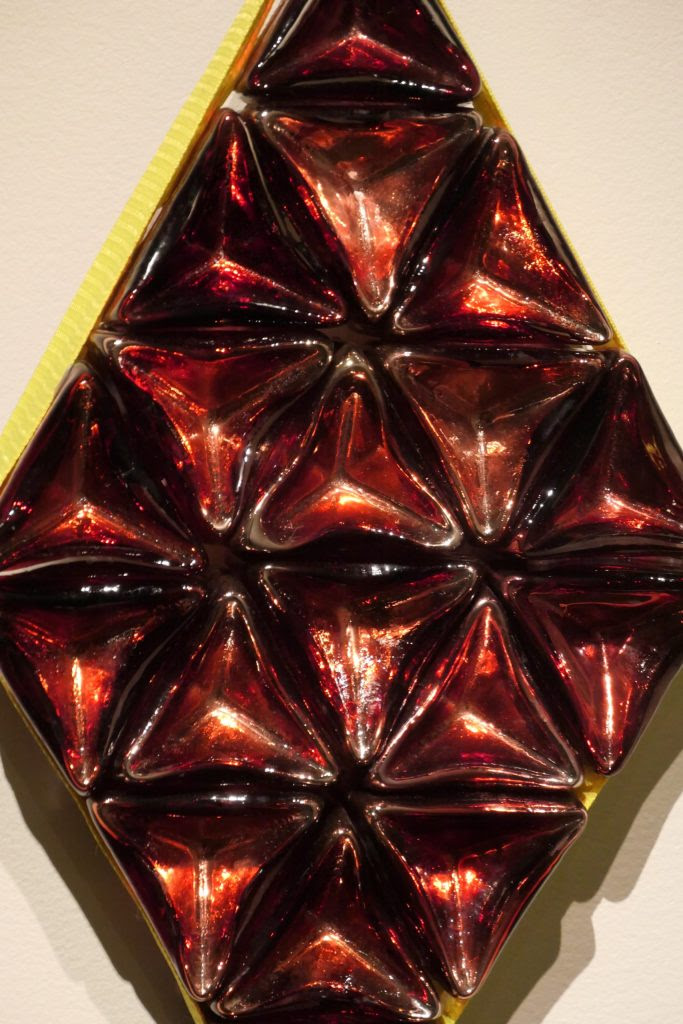
Pink as in Revolution (2019), from The Wheel of Liberation series by Sabrina Knowles and Jenny Pohlman, is a circle of double-headed spears that evoke imagery of totem and power, of prayer wheels and meditation. Knowing that throughout their 25-year collaboration the two artists have traveled wide and far, always searching for inspiration from women throughout time and civilizations, helps to trace the influences. As the artists explain: “Regarding the symbology of our spears: to us they represent self-empowerment and freedom from oppression and were born from learning about the story of Nehanda during our 1997 Zimbabwe journey.”


*
WASHINGTON STATE IS OFTEN CONSIDERED an LGTBQ+ friendly state. LGTBQ people are legally protected from discrimination; Washington enacted LGBTQ protections in 2006. Same-sex marriage has been legal since 2012, and same-sex couples are allowed to adopt. Conversion therapy on minors has also been illegal since 2018. The state has a new LGTBQ commission, with Manny Santiago as executive director, that was created by the Legislature and signed into law by Gov. Jay Inslee in April 2019. The commission will identify the needs of and advocate for the lesbian, gay, bisexual, transgender and queer communities. The immediate goals are directed at assessing the laws that protect this community, to establish a resource guide that can be easily accessed across the state, and to understand the needs of the various sub-segments of the population.
High on Santiago’s list is also education. The Museum of Glass’s current exhibition is certainly a step in that direction. Transparency teaches without ever sliding into didactic boredom.

*
THERE IS AN ONGOING DISCUSSION AMONG producers, exhibitors, and consumers of art regarding the role of identity politics. It is about more than “just” people of a particular race, ethnicity, gender, or religion forming alliances and organizing politically to defend their group’s interests. Hannah Arendt’s principle that one can resist only in terms of the identity under attack points to an important insight: People are not statistically, historically, or economically interchangeable. An economically secure white woman has a different existence from a poverty-stricken black one. A CIS person is not exposed to the abuse and persecution that those labeled sexually deviant often were across history and cultures. Identity, when under threat, IS political. And the political space to explore the consequences of life as a minority and the implications of discrimination needs to be granted in public – even when it also invites ethnographic-nationalist identity politics that are sprouting like poisonous mushrooms on the fertile grounds of European and American right-wing movements.
To pinpoint a political identity that is under attack is a way to fight oppression, rather than a danger to inclusive, democratic values. Calls for a “shared humanity,” then, need to be heeded with caution, if they try to blot out what is the specific fate of a minority. On the other hand, demonstrations of what we all share can open the borders between groups, and invite less defensive reflection and exploration. And this, I think, is what Transparency pulls off when it’s at its best.
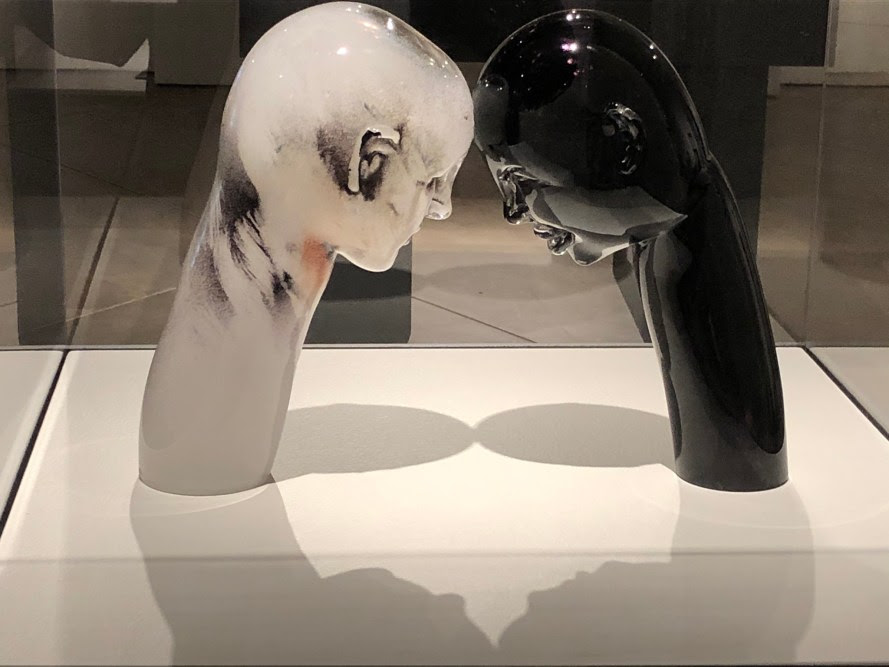
For one, there is a focus on the human figure in gender-neutral or abstracting ways, whether we are looking at the work by Pearl Dick or Drew Mattei (I could not find a website, alas.)
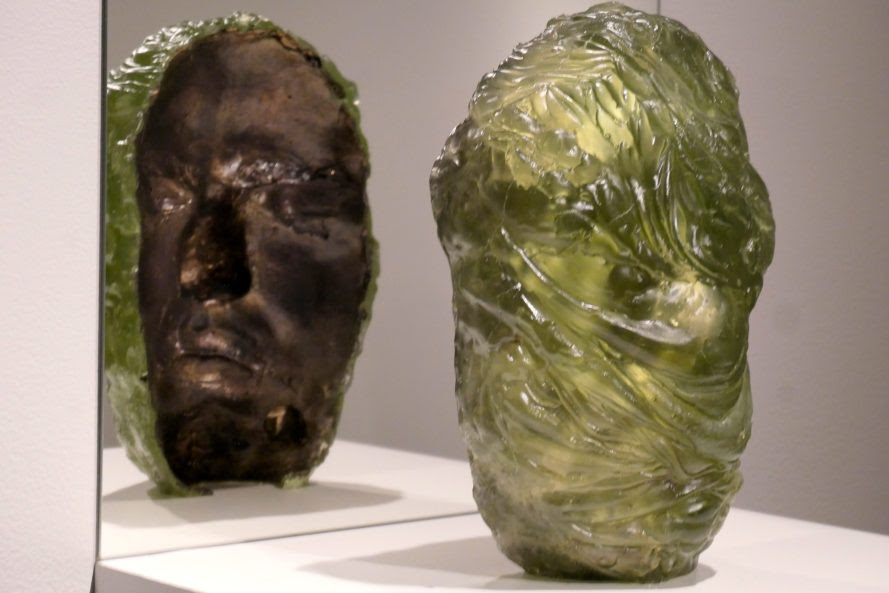
For me, the most successful pairing was an installation of multiple abstracted figures, Transparent (2017), again by the perceptive team of Pohlman and Knowles, against a paint marker mural by Natalie Hope McDonald The Line of Beauty (2019.) The figures, from the duo’s Hommage series, display fluent movements of necks, heads and shoulders, as if to turn to us or each other to form connections.
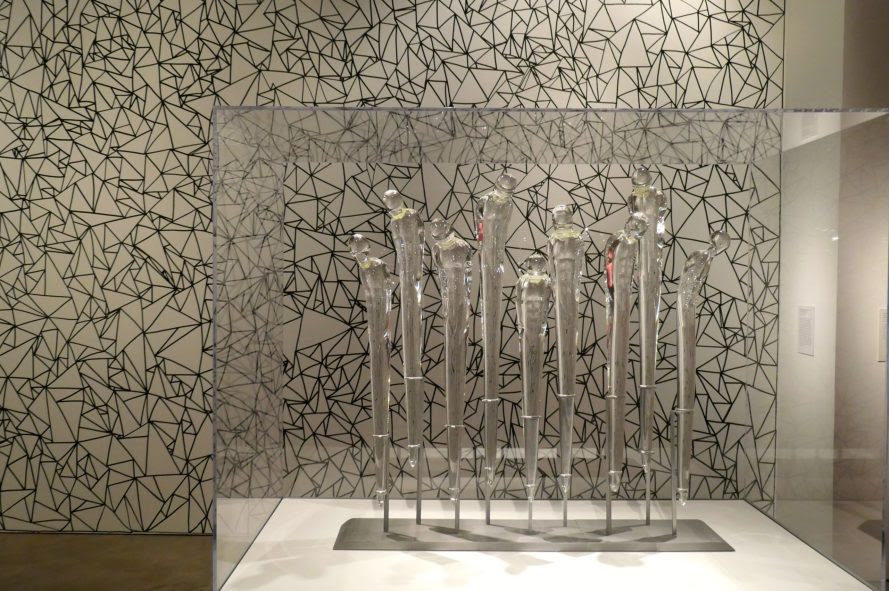


Connectedness is also the first impression you have when looking at the web of lines across the wall behind the installation. The intersections are sometimes in focus, sometimes partially obscured by the glass figures, and only eventually reveal the strong triangular elements that hold them together, a motif that is not only common in modern LGTBQ iconography, but was also used as an identifier in Nazi persecution of members of this community.
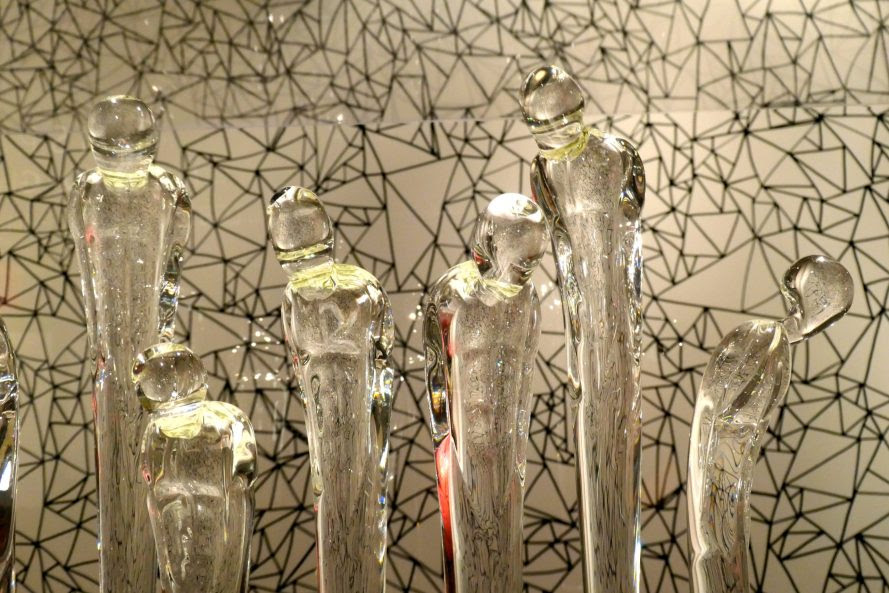
The title of this piece by Niki Hildebrand, What affects one affects us all (2014), summarizes it perfectly: understanding, accepting, and embracing connections allow us to act in solidarity with human beings whose identity was the source for persecution. MOG’s exhibit Transparency paves the way for such connection.
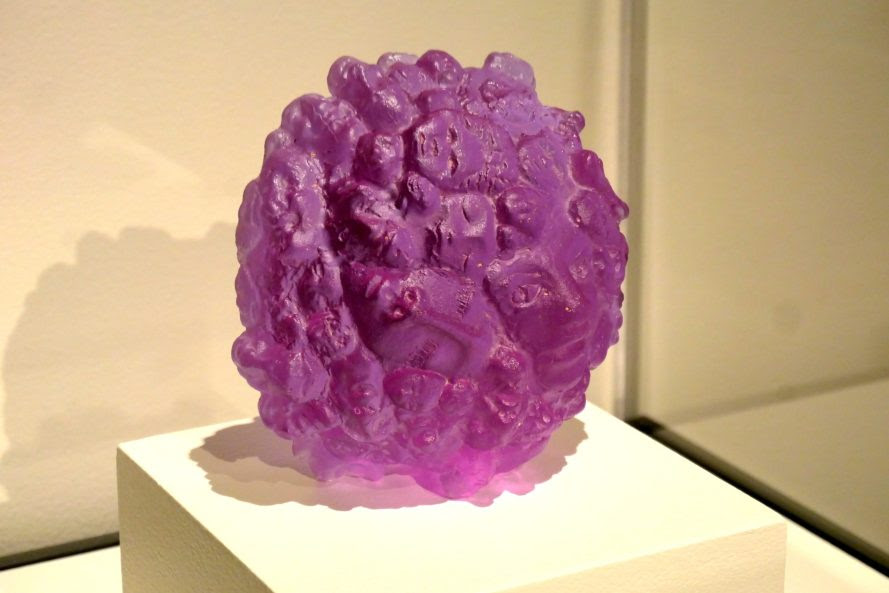
*
MUSEUM OF GLASS
- 1801 Dock Street, Tacoma, Wash. 98402
- 253.284.4750
- info@museumofglass.org
- October 2019 – September 2020
- Friderike Heuer’s essay first appeared on her web site YDP – Your Daily Picture on Nov. 21, 2019, under the title Art on the Road: Transparency – an LGBTQ+ Exhibition at the Museum of Glass, Tacoma. It is republished here with permission.































